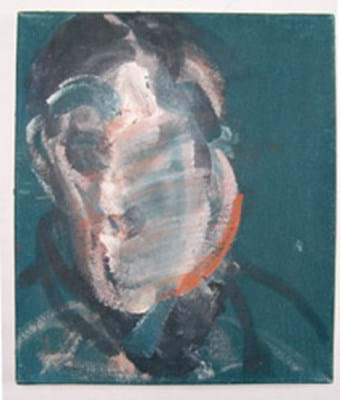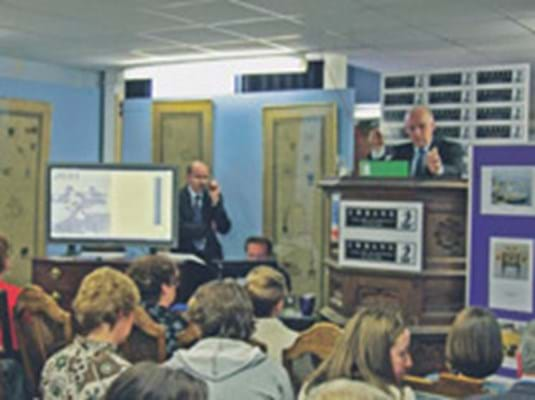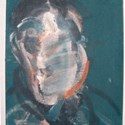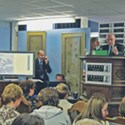On the evening of April 24, hard on the heels of Duke's of Dorchester's £1.7m sale of Fra Angelico's San Marco panels on April 19, Woking auctioneer Ewbank (17.5% buyer's premium) put a small but unique archive of material from Francis Bacon's studio under the hammer in his saleroom in a field just off the A3.
The 45 lots of diaries, letters, photographs, personal ephemera and small oil studies were the property of Mac Robertson, a retired electrician.
During the 1970s Mr Robertson had undertaken some work in Bacon's famously chaotic studio and had been given some 'rubbish' the artist was about to throw out.
Attempts were made during the 1990s to sell the material to the artist's estate, but though the provenance appears to have been accepted, no price could be agreed.
With Sotheby's also declining to involve themselves with the material, the Robertson Collection, as it was now known, was being offered by his local Surrey auction house with an ultra-cautious estimate of just £35,000-50,000.
On the night the prestige of the Bacon name produced a very different valuation. Just over an hour of feverish multiple-estimate bidding in the room, on the telephone and on the internet generated a premium-inclusive total of £1.1m, with only one lot left unsold.
"I thought the sale could fetch £200,000-300,000, but I didn't think it would make that much," commented a slightly bid-drunk Chris Ewbank after the auction. This £1.1m house record total was more than double the highest prediction of £450,000 in Ewbank's staff sweepstake.
A significant proportion of the 70 or so people in the room at Ewbank's were private individuals bidding for themselves. Anita Bacon (no relation) from Sussex was prepared to pay £2000 for the 1971 Crockford's diary that tersely recorded the death of George Dyer, the artist's lover, in a Paris hotel room. "I wanted something personal," Ms Bacon told ATG. "I'm a fan. There were three things I was after, and I managed to buy them all. I'm delighted."
Another conspicuous buyer in the room was London photograph dealer Michael Hoppen, who paid £5800, £5500, £2900 and £9200 apiece for four lots of Eadweard Muybridge-style contact sheets of figures in movement by an unknown 1970s New York photographer.
But inevitably the most spectacular prices were generated by the dozen 14 x 12in (35 x 30cm) oil on canvas studies that concluded the sale. None of these studies had been completed or fully resolved by Bacon. Four of them had so dissatisfied the artist that's he'd cut out the faces with a razorblade.
Undeterred by their mutilated condition, a Continental telephone buyer paid £40,000, £30,000 and £30,000 for three of these violently 'de-faced' canvases.
The two best-preserved and most fully worked canvases were a Study of a Dog at Rest and a Study for a Portrait, estimated at £2000-3000 and £12,000-18,000 respectively. A shoe imprint on the back of the dog study indicated it had been lying upside down in the artist's studio for some time, but this only seemed to add to the Bacon mystique, inspiring a bid of £260,000 from a mobile-wielding London dealer thought to be representing a German collector.
The sale culminated in a lengthy battle between at least six bidders determined to own Study for a Portrait.
This ghostly, tentatively explored head that may or may not have been modelled by Lucian Freud eventually sold to a Continental-based collector on the telephone for £400,000 plus 17.5% premium.
Ewbank's report that although the sale was thoroughly viewed by the major names of the London art trade, very little sold to dealers.
This was hardly surprising given the price levels.
"A number of people asked me if I was going to get involved with anything in this sale, but I said absolutely not," commented one leading London dealer who over the years has bought and sold a number of major works by Bacon.
"I always knew the prices for these things were going to be more than you'd pay at Sotheby's New York."
By Scott Reyburn
Private buyers dominate the bidding at Bacon sale
For the second time in the space of a week a UK provincial auctioneer was celebrating a million-pound sale of works by one of the world’s most famous artists.








